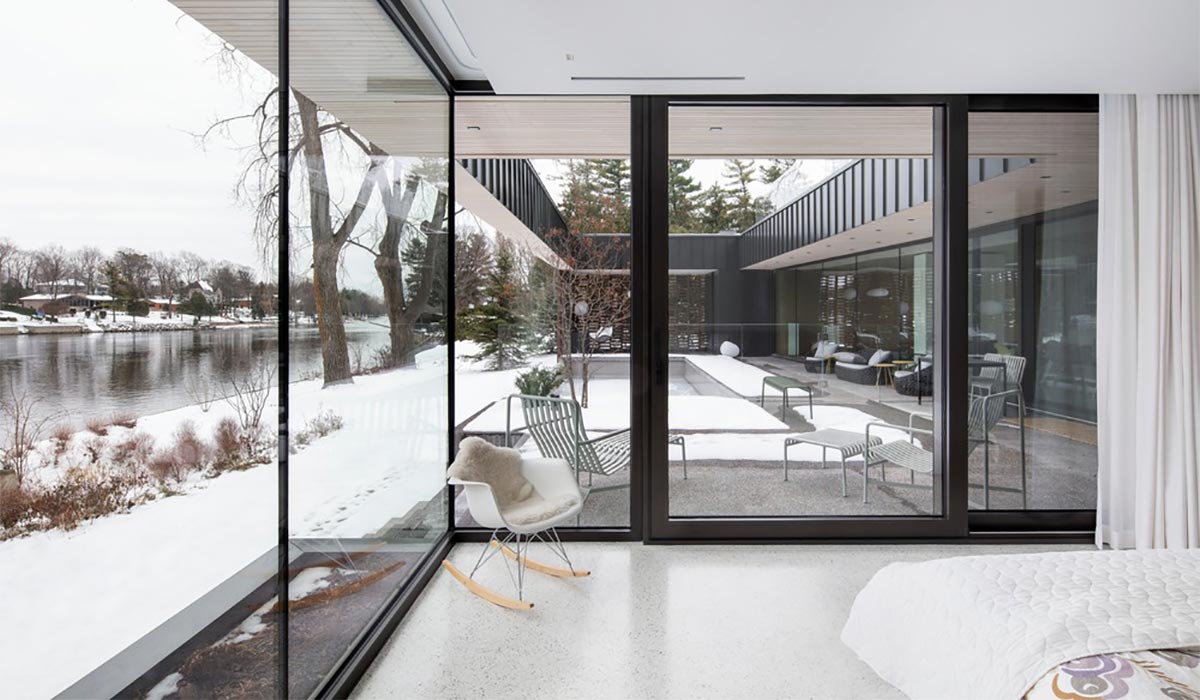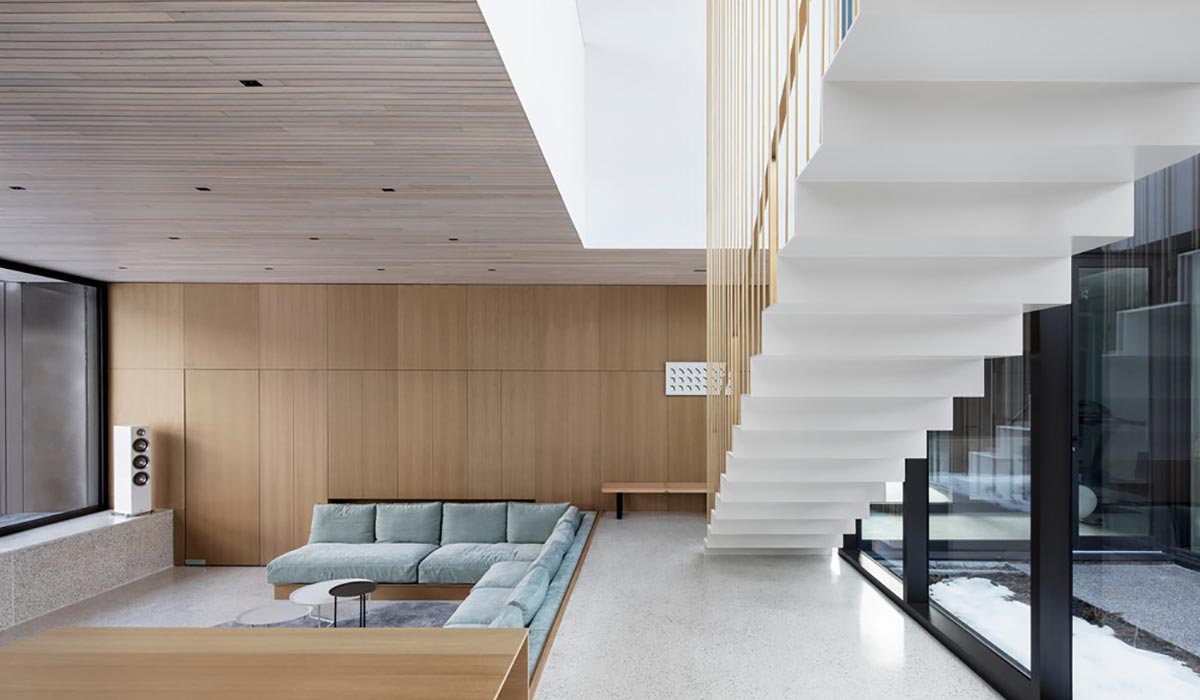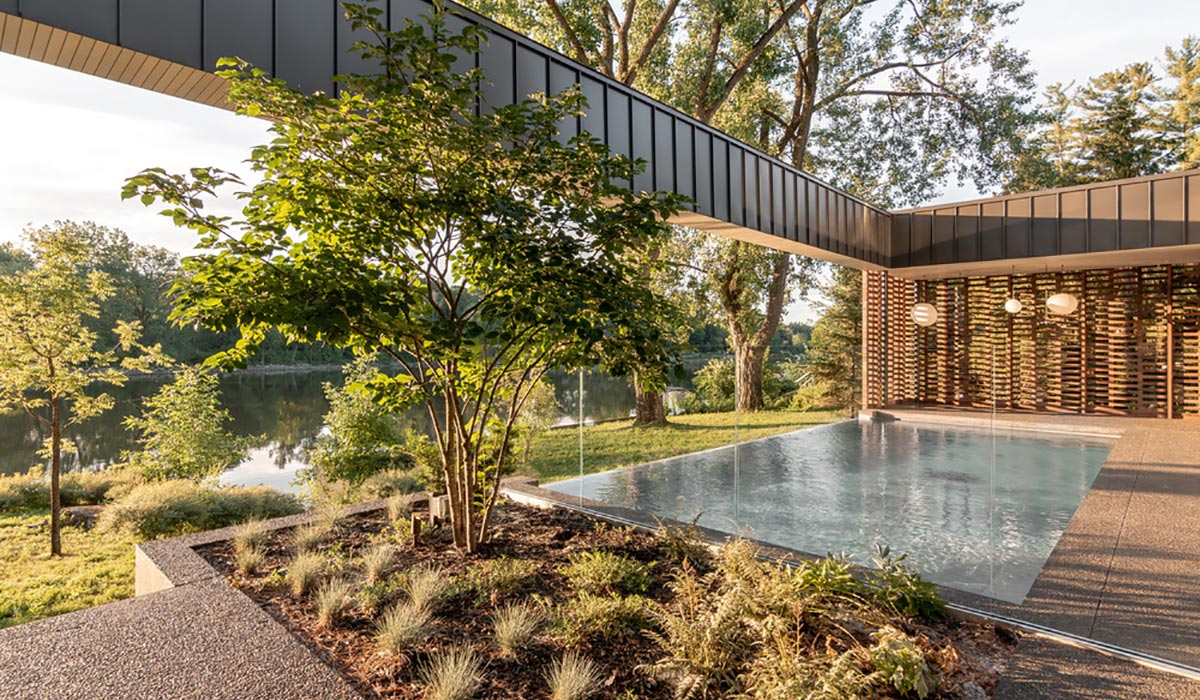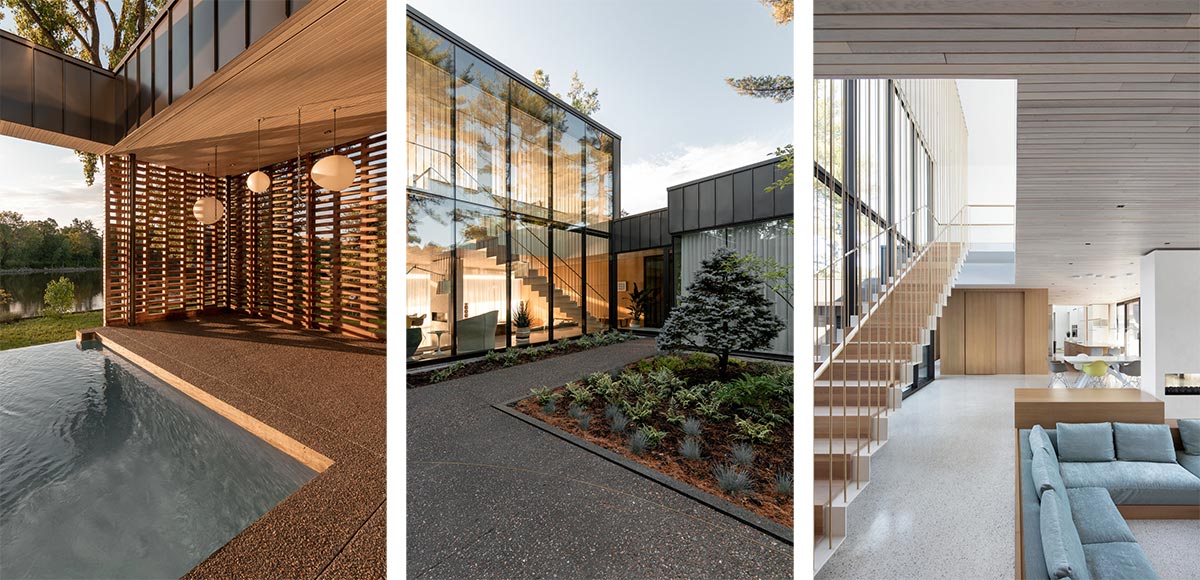
Fact File
Location: Montreal, Québec, Canada
Area: 580 m2
Photo credit: Chevalier Morales
Source: V2.com

This single-family home, built on the banks of a river, in the northern suburbs of Montreal, is the result of an architectural conversation with the design work of the architects of that era. Hidden behind a row of tall, mature pines, its siting allows the existing natural vegetation to become an integral part of the project while optimizing the views towards the water.
Revisiting some key architectural elements of modernism in a contemporary manner, the geometry of the floor and ceilings, the integrated wooden furniture and the masonry cladding have all been reimagined.

The question of privacy versus openings, crucial in the 1950’s, enables a response that creates two rectangular courtyards. They are inserted into the volume, bringing natural light into the heart of the residence, while also integrating the backyard and the swimming pool. These exterior spaces that are extruded from the initial mass also serve to define and structure the geometry of the interior space of the project. The garage is directly integrated into the house, which itself forms a perfect 100-foot square.
The siting of the residence makes it possible to reintegrate the pre-existing alignments of the land and to therefore conserve as many existing trees as possible. Large coniferous trees were then planted in the heart of the first landscaped courtyard that provides vehicular access.

The programmatic distribution of the interior spaces takes into consideration the relationship with the street, the river, the solar orientation and the specific needs of the inhabitants. Also, the living room space was lowered a few steps and a glass pavilion installed on the roof.
The north-south axis of the project houses the more intimate spaces, while the living spaces are spread out along the river, thereby creating a strong link with the surrounding landscape. Abundant vegetation provides privacy while offering a green and natural context for the neighborhood.
Treatment of materials
A palette of natural materials include clay brick (wall), wood (soffit) and stone flooring. Brass accents have added to the project, as has metal cladding. On the front facade, a large bay window creates a visual flow to the river while serving to accentuate the pavilion like feel of the design.
The mezzanine space that allows residents to benefit from an additional view onto the river serves to accentuate the composition and break up the horizontality of the residence. Some areas of the roof are covered with a white granular membrane while others have been landscaped, offering a green and temperate environment for this level. The overall emphasis of a sustainable design approach is enhanced through the incorporation of geothermal wells that provide both heating and ventilation for the residence.















